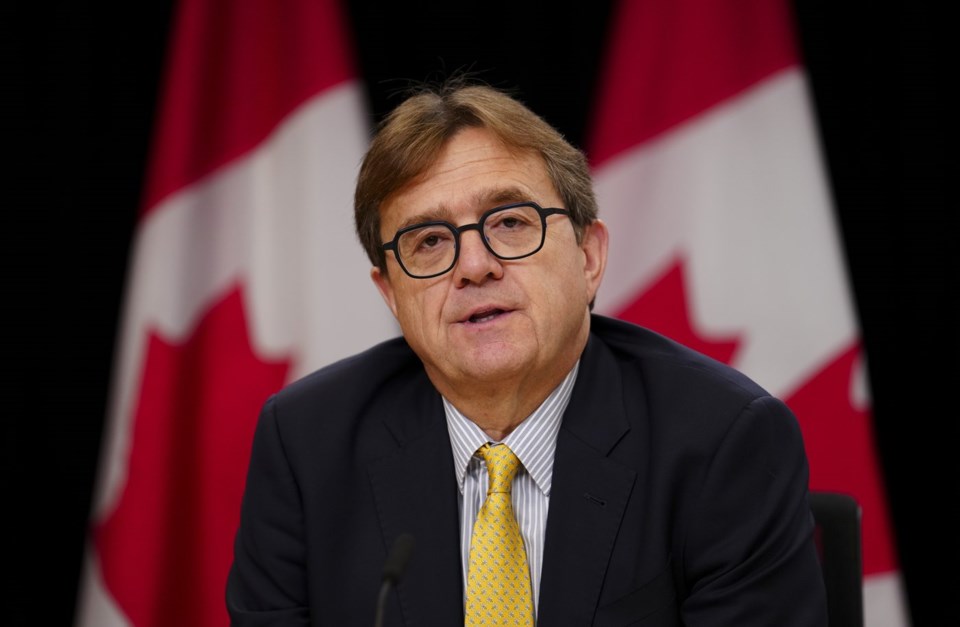CALGARY — Shell Canada's decision last week to greenlight its Polaris carbon capture project is likely just the start of a wave of positive investment decisions by proponents of the emissions-reducing technology, said federal Natural Resources Minister Jonathan Wilkinson.
Wilkinson said in an interview he expects 20 to 25 commercial-scale carbon capture and storage projects to break ground in Canada within the next decade.
He added he expects some of those projects will be green-lit by companies soon, now that a new federal investment tax credit for carbon capture and storage is in effect.
"I do expect to see more carbon capture announcements in the coming months," Wilkinson said in Calgary this week, where he is attending an annual gathering of federal, provincial and territorial ministers responsible for energy and mining portfolios.
While getting the investment tax credit enshrined into law "took longer" than the federal government would have liked, Wilkinson said, companies now have the ability to apply for and receive the credit. He said the tax incentive, which will cover up to 50 per cent of the capital cost of carbon capture projects, is what many heavy industrial companies have been waiting for in order to make a final investment decision.
"The Shell Polaris announcement last week was a direct result of the investment tax credit ... it was a direct result of the royal assent on that," Wilkinson said.
Carbon capture and storage (CCS) is a term for the use of technology to trap the harmful greenhouse gas emissions from industrial processes and store them safely in underground geological formations. Shell's Polaris project, for example, will be designed to capture about 650,000 tonnes of carbon dioxide annually from the Shell-owned Scotford refinery and chemicals complex near Edmonton.
So far, Canada only has a handful of CCS projects in operation. Since 2000, these projects — which include an existing Shell project, called Quest — have stored about 44 million tonnes of CO2, the equivalent of taking more than 9.4 million cars off the road.
But the federal emissions reduction plan — which calls for Canada to cut its emissions by 40 to 45 per cent below 2005 levels by 2030 and to reach net-zero emissions by 2050 — envisions national CCS capacity more than tripling by 2030. That would require adding facilities that can capture and store at least 15 million tonnes of carbon dioxide emissions annually.
The Regina-based International CCS Knowledge Centre says meeting this goal will require implementing carbon capture and storage in a range of heavy industries, including power generation, cement, steel and fertilizer manufacturing, mining, and petrochemical processing.
There are currently more than 40 individual carbon capture and storage projects proposed by companies in Canada, according to an International Energy Agency database.
But it's the oil and gas industry that has proposed the highest-profile project thus far. A group of oilsands companies known as the Pathways Alliance has proposed investing $16.5 billion to build a massive pipeline that would transport captured carbon from 14 individual oilsands sites to a storage location near Cold Lake.
If built, it would be one of the world's largest CCS projects, but the Pathways companies have not yet made a final investment decision.
While Wilkinson has previously criticized the oilsands industry group for its perceived slowness to act, he said this week he believes the Pathways project will get done.
"It's a game that has taken longer to get to the outcome than I think all of us want," he said.
"We are still working a little bit on the structure of that. But I do believe that it will move forward. There's just a bit more work to do to finish the job."
The Pathways consortium has spent millions of dollars on a countrywide public relations blitz aimed at demonstrating that the oilsands is committed to helping fight climate change.
But last month, the group removed all content from its website and social media feeds, citing uncertainty over new anti-greenwashing rules that were recently passed into law as part of the federal omnibus Bill C-59.
The CEOs of the Pathways companies said at the time that the new rules — which say businesses must be able to back up their environmental claims with evidence — are a threat to freedom of communication and open the door to "frivolous litigation."
But Wilkinson said he believes there was no need for Pathways to scrub its website the way it did.
"I think it was an overreaction on their part," he said, adding the move may even have led some Canadians to question whether Pathways believes its own messaging is truthful.
"If I were Pathways, I probably would have waited until the guidance around the methodology came forward from the Competition Bureau."
On Thursday, the Competition Bureau said it has received a large number of questions about how to interpret the new greenwashing provisions. The regulator said it will develop guidance "on an accelerated basis" and plans to launch a public consultation in the coming weeks.
This report by The Canadian Press was first published July 4, 2024.
Amanda Stephenson, The Canadian Press




